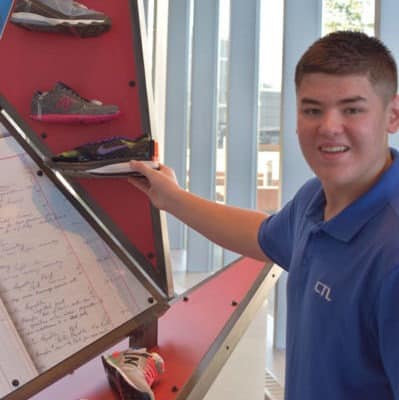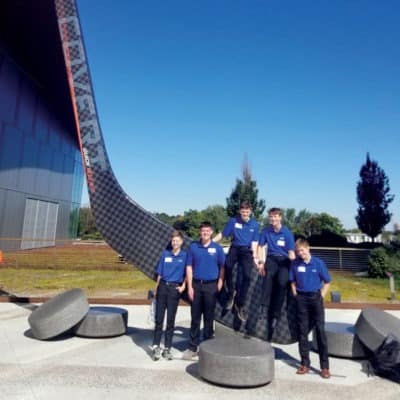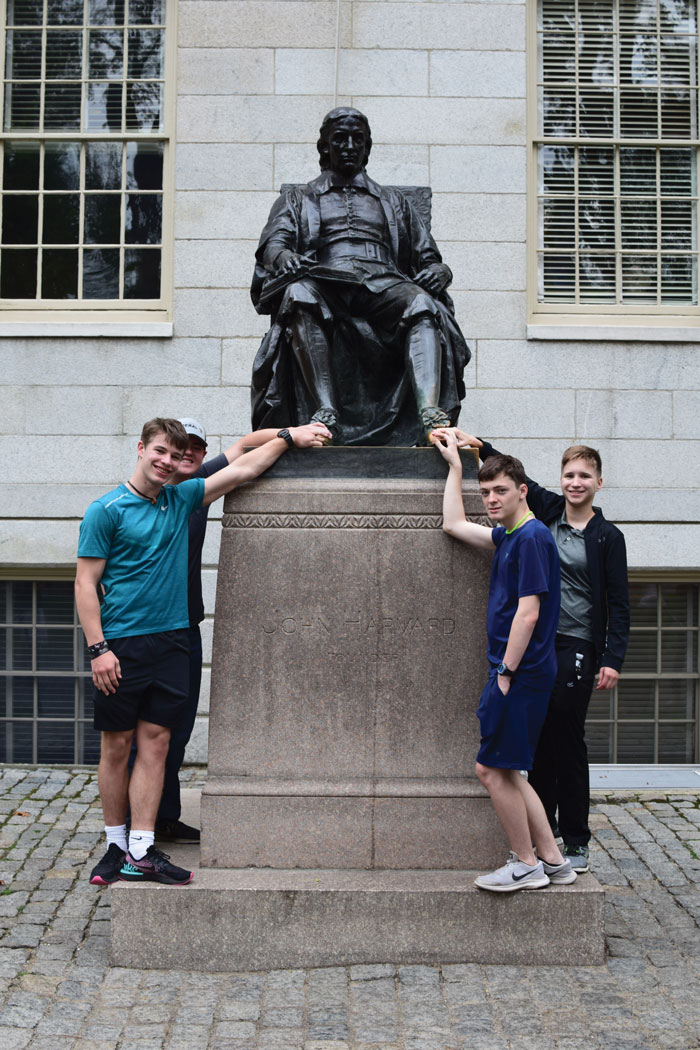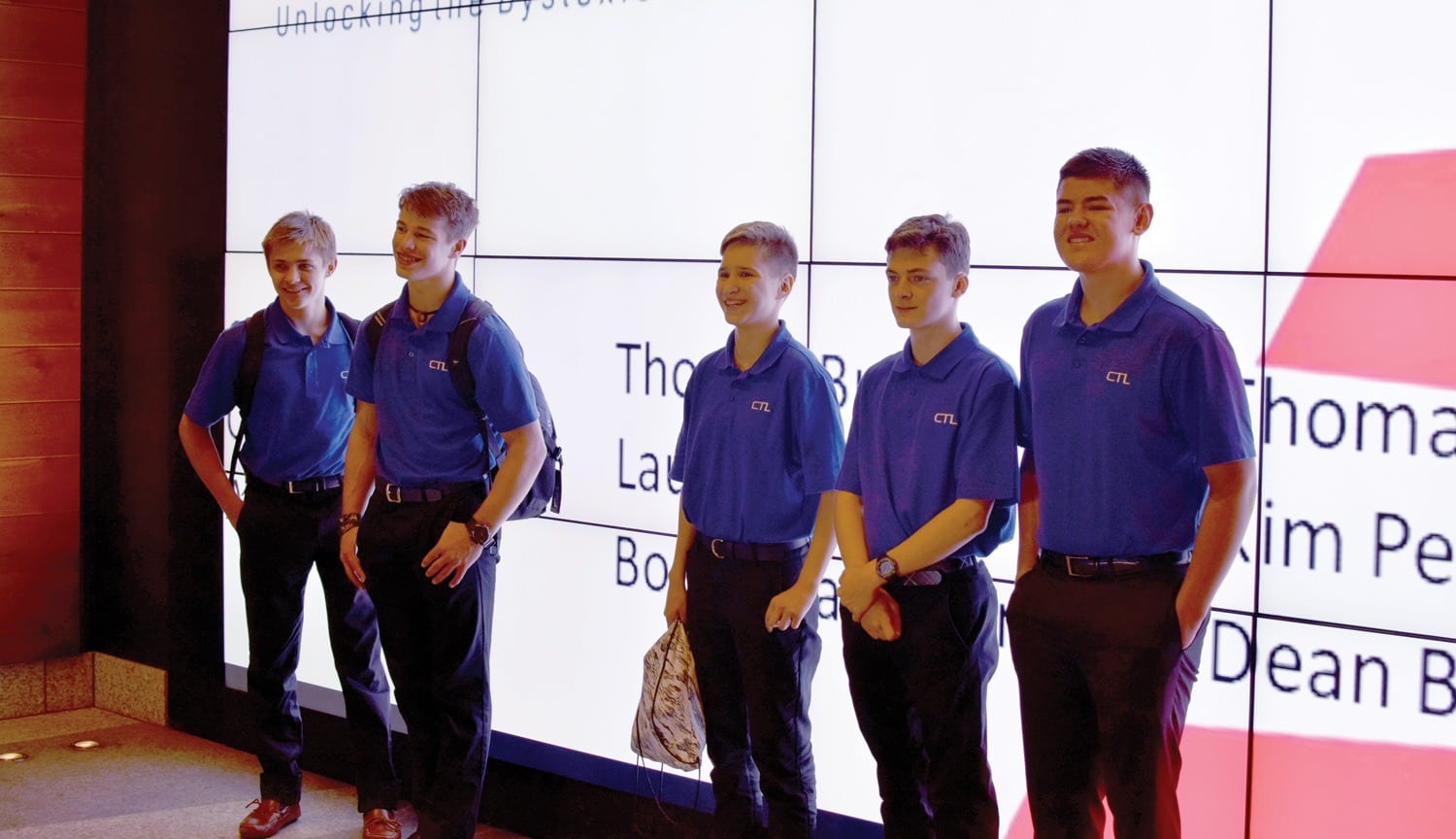Originally published in “Connections” in February 2020.
Written by Groves Upper School Teacher Andy Tolan
The Groves Upper School is midway through our second year of an exciting experiment – an experiment that has already begun to show promising results. It was a radical move, devoting an entire class period each day to explicitly teaching skills that many schools hope students will absorb more implicitly – executive functioning skills.
Executive functioning (EF) skills are the tools, strategies, and habits of thought and action that allow us to set and reach goals. Or, as one student put it, “Adulting 101.” It is a class about the brain, a class about new tools for work and learning, and a class for thinking strategically about success, setbacks, and growth. Students engage in daily mindfulness practice, and connect what is happening in the classroom now to the life that awaits them and the goals they have set for themselves outside of a classroom’s four walls. They explore their own learning profile to build a strength-based narrative of who they are and move towards self-advocacy.
As I tell my students each September, I want them to learn at 16 what I, an adult with ADHD, did not really learn until I was 26 – how to own and even love your strengths and weaknesses, how to relate what you do day to day to the bigger passions and values that fuel your life, and how to plan it out and get it done with the brain you have, not the brain you wish you had.
One of the best experiences we have had as students and as teachers has been working with a curriculum from a dyslexia education and advocacy organization called Noticeability (founded by Dean Bragonier, who was the 2018 Groves Gala speaker). In the Entrepreneurs and Innovators curriculum, our students formed small groups, came up with creative solutions to problems big and small, and fine-tuned sleek, professional pitch presentations that offered a value proposition to a target market. They delivered these pitches at our culminating “Groves (Shark) Tank” event held last May. Local entrepreneurs, HR bigwigs, and corporate marketing types descended on the school (along with the KARE 11 news van), and our students blew their proverbial socks off.
It could have ended there, but for five of our executive functioning students, the moment they spent basking in the glow of a successful Groves Tank was the calm eye of the storm. Mr. Bragonier, the aforementioned Gala speaker and mastermind behind the Noticeability curriculum, is quite the dapper dresser, a bit of a clotheshorse actually. That is to say, Dean knows a good thing when he sees it.
In our case, the ‘good thing’ in question was a doozy – what he saw was the same potential in our students that we see, and he knew where it could take them. Their idea, shoes that have replaceable soles, and soles suited to a variety of purposes, athletic or otherwise, caught his attention. When he saw their prototype (a dissected Nike sneaker with sole held firmly in place by 3M hook-and-loop and a sliding clasp harvested from a Nerf gun) they captured his imagination. It turns out that Dean knows a guy who knows a guy, and that guy is in the shoe business.
After a few breathlessly optimistic conference calls and a little help from a pillar Groves family that saw the same great opportunity for our students that we did, I was able to make some of the most exciting phone calls of my life, calls to my students that went something like this:
ME: Do you remember our Groves Tank from last spring?
STUDENT: called by a teacher in the middle of the summer . . .Yes?
ME: Do you want a chance to do your pitch presentation again?
STUDENT: knows something is up . . .Ye-Yes?
Me: Do you want to fly to Boston with the rest of your team to pitch your shoe idea to New Balance?
Student: screams in growing comprehension and glee
::SCENE::
Yeah, that was lots of fun.

You know how grandparents can tell you how great their grandchildren are without it being bragging because, well, that’s their privilege as grandparents? I hope something similar applies to teachers and their students. If not, you’re about to hear me brag a little bit.
As I tell you about the trip, I could tell you about the excitement my students felt in a new city. I could tell you about the eager (dare I say aspirational?) stroll we took through Harvard’s campus, about the meals we ate (high schoolers really know how to put an omelet away in a hurry), or even about the pitch itself, but the highlight of the trip was seeing my students step boldly into an adult world and get accepted by its rules, succeeding on its terms.
First of all, my students were prepared. They reworked their presentation (new audience, new purpose, new presentation), they knew each other’s areas of strength, they trusted each other to support and offset their relative weaknesses, and on game day they knew each other’s roles as well as their own. After a day of travel and a night of diligent rehearsal in their hotel room, my students were hardly nervous.
On the bus ride to New Balance’s corporate campus, I considered how far they had come, and what they were about to do. New Balance knows footwear, it is their industry, and accordingly, blowing their socks off would be a bit of a challenge.
I knew our students had accomplished something amazing when their pitch had ended and New Balance’s lead designers and product managers could barely wait their turns to give them feedback. In a standout moment, one of the designers whispered something to Ken Thornby, our host and New Balance’s general manager, and Ken gave his assent; the designer had asked to give the Groves group “the same kind of feedback [they] give each other.”

He walked them through some of the practical aspects of their shoe—where the foot puts stress on the sole, other ways they might attach their swappable soles, and he gave them sound advice about narrowing their focus and fine-tuning their market.
Would my students see this as criticism? Would they be discouraged? I should have had more faith. On the contrary, this meant the world to my students, and to me – they had gotten the nod, the implicit “you belong here” from someone who would know.
What happened next? After their celebratory lunch, did our victorious students run amok in Harvard Square, window shopping and blowing their spending money on ice cream and gift shop tchotchkes, the way I might have at that age?
Of course not. They went back to our hotel to hold a stakeholder’s meeting.
Yeah, I think this executive functioning thing might have legs.
This unique student enrichment experience was made possible thanks to the generosity of the Sanger Family Foundation- Steve, Karen, Mark and Ashley

Executive Functioning: In the Classroom and Beyond
At Groves Academy students engage in experiences designed to foster self-awareness and to develop their executive functioning skills – the brain’s ability to coordinate the thinking and behavior needed to start, sustain, monitor, and adjust attitudes and behaviors needed to achieve a goal. Groves teachers provide the tools, strategies, and opportunities for metacognition that equip students to reflect on their own patterns of thinking and behavior. Social and emotional learning at Groves Academy empowers students to understand themselves and to interact with others in meaningful and productive ways. This occurs in a nurturing environment where students learn from both success and failure.
9th-grade focus
Training the Student Brain for School and Learning
10th-grade focus
Self-Discovery: Finding Your “Why”
11th-grade focus
Leadership: Setting the Course
& Leading the Way
12th-grade focus
Legacy: What Comes Next & What We Leave Behind
